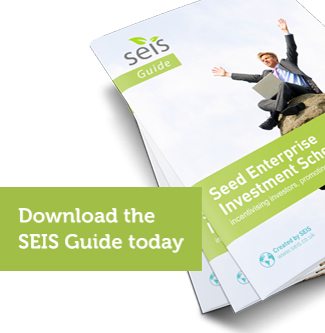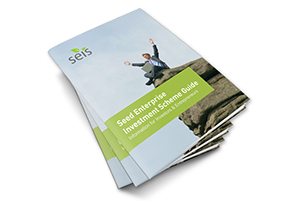The Seed Enterprise Investment Scheme (SEIS) offers one of the most generous returns on investments in the world.
That is a bold statement, but besides a similar scheme copied in Australia, there is nowhere else that is as attractive for investors.
It’s hard to make money on savings because stashing cash in the bank earns very little – and effectively the low rates just slow down the effects of inflation on eroding spending power.
Pensions and ISAs are offer better returns, but the government imposes annual limits on how much someone can save in each.
In 2012, the then Chancellor George Osborne realised that while savers were struggling so were entrepreneurs who needed cash to fuel their start-up businesses as banks were not lending to high risk ventures.
He thought why not devise a scheme that solved both problems – and SEIS was born.
Essentially, SEIS lowers the risk for investors who want to put money into start-up companies by offering government-backed tax breaks.
SEIS recognises that all new businesses have the potential to fail, so does not protect all investor cash – but does safeguard up to 87.5% of investments for 45% additional rate taxpayers.
The wealth warning is do not invest if you do not want to bear some risk that could mean losing some money.
How SEIS works

That reduces the financial risk of a loss if the SEIS company fails to 50% of the investment.
If a profit is made on the sale of a stake in a SEIS company, the amount is exempt from capital gains tax.
If the company fails, investors can offset some of their losses against income tax.
SEIS is not a ‘can’t lose’ investment, but the tax breaks that are not available anywhere else take the financial sting out of a start-up company failing.
For example, a taxpayer earning £50,000 a year would pay income tax of about £8,700 a year.
If the taxpayer invested £10,000 in a start-up technology business, they would get a £5,000 income tax discount straight away, reducing the amount they pay to £3,700.
Should they sell their shares for more than £10,000, no capital gains tax is due, but if the firm goes bust, the remaining £5,000 invested could be offset against income tax as loss relief.
If you pay less tax than 50% incoming relief, the excess cannot be carried forward.
SEIS investment need to know
Not every start-up company is eligible for SEIS and other restrictions limit investments:
- Investors cannot hold more than 30% of the shares in a SEIS start-up
- Investors should hold SEIS shares for a minimum of three years to qualify for the generous tax breaks
- The company must not be quoted on a major stock exchange
- The business must not employ more than 25 staff
- The company may not have assets worth more than £200,000 at the time any SEIS investment is made
- Not all trades qualify – the government is wary that some SEIS companies set-up for the tax breaks rather than to grow a business. The shift from 2018 is to weed these companies out in favour of knowledge or technology-based start-ups
- Investors collect initial income tax relief of 50% on investments up to £100,000 in a tax year in qualifying shares in a SEIS company issued on or after April 6, 2012
- Investors can be a director of the SEIS company, but not an employee
- SEIS tax relief applies only to recently incorporated companies
- The maximum aggregate SEIS investment for a company is £150,000
HMRC advance assurance
Advance assurance is not compulsory but is a good indicator that a company has been checked out by the tax man to ensure the SEIS offering complies with the rules.
That’s important because if a company breaks SEIS rules, HMRC will stop or demand a refund of any tax relief, rendering the investment useless.
Companies must provide a comprehensive application package to HMRC which includes any trading history, a business plan, how much investment is sought and how the money will be spent.
Should you invest in SEIS?
The answer depends on your attitude to risk.
Investing in a small start-up with no financial track record is a lot riskier than buying shares in an established stock market star, such as BP or Lloyds Bank.
That risk means investors are more likely to lose their money – with
Around 50% fail in the first five years, according to research by insurer RSA.
But small companies can grow fast, quickly doubling or trebling the value of an investment.
Where you fall on the scale between the risk of losing money, compared with the chance of making a lot of money determines if SEIS is the right investment for you.
Another drawback is how to dispose of SEIS shares as no platform exists across all schemes. Some crowdfunding sites allow SEIS share trading if the subscription shares were bought through them.
How to invest in SEIS
SEIS is open to all kinds of investors, from friends and family backing an entrepreneur they know to more formal investments by business angels, who may also contribute mentoring or other skills.
To inject some cash into a SEIS company, either by the shares direct or a portfolio fund.
Deciding how to invest is where risk comes in to play again.
Investing directly into a SEIS company is inherently riskier than taking a portfolio stake.
A direct investment is like putting all your investment eggs in one basket, while a portfolio spreads, or diversifies, that risk across several companies.
Crowdfunding web sites also list dozens of SEIS eligible schemes.
SEIS tax break recap
SEIS offers investors several tax breaks, regardless of the rate that they pay tax. These include:
- 50% income tax relief on the inward investment
- Carry-back income tax relief is available on SEIS investments from April 6, 2014 onwards
- No capital gains tax on the increase in value of shares held in a SEIS company
- Loss relief should the SEIS company fail
- No inheritance tax on shares bought through the scheme – providing the shares have been owned for two years and the company is not listed on the Alternative Investment Market (AIM)
Find out more about SEIS
The HMRC web site has several technical guides for investors and entrepreneurs

The guide is downloadable from SEIS.co.uk , and provides an easily digestible source of vital information for anybody who could benefit from the scheme.
